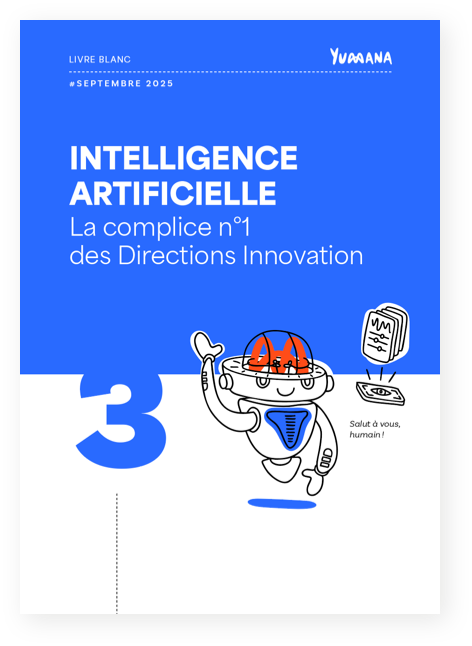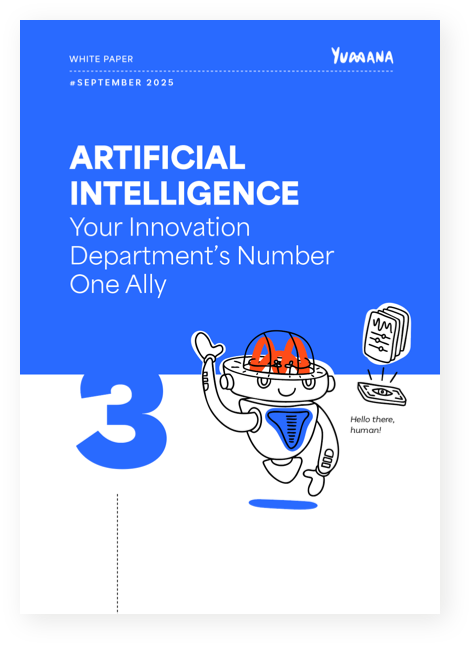Launching an innovation challenge gives employees a structured space to express themselves, where ideas surface, evolve through collective intelligence, and transform into actionable projects ready for rollout. When thoughtfully designed, it goes far beyond basic ideation. It becomes a true catalyst for innovation and a strategic tool that energizes teams and drives real impact.
However, while this mechanism is powerful, it’s also very demanding. Sometimes confused with the concept of an idea box, without the right mechanics, it can struggle to prove its worth and risk becoming a brainstorming session that leads to no concrete projects.
Heterogeneous contributions, ideas left in limbo due to a lack of rigorous selection, and waning engagement are all pitfalls that can compromise an initiative’s impact.
Yet, when executed well, with its short, engaging, and impactful format, a challenge can be a real catalyst for corporate innovation and make a difference. For it to fulfill its promises and unleash its full potential, you first need to master its fundamentals.
So, how do you structure a challenge to make it a strategic lever? What are the essential pillars to ensure concrete results?
Let’s break down our five key points for a successful first innovation challenge!

Innovation Challenge: Keys to Success
1. A Precise Framework Makes All the Difference
The first step in an innovation challenge is to clarify the stakes and establish a clear framework. To mobilize your teams, start by clearly stating a problem to solve, an operational issue, or a unifying topic to iterate on.
Defining the right topic is just the beginning, it’s equally important to structure the challenge from the outset to deliver a seamless, engaging experience aligned with strategic goals. A clear roadmap outlining key steps brings clarity, encourages participation, and eliminates confusion that could slow down adoption.
A genuine roadmap must be designed well before the challenge even begins, including:
- The targeted audience
- Key stages and milestones
- Idea selection criteria
- Rewards for winning teams
(these are absolutely essential for ensuring the success of the initiative!) - Post-challenge follow-up for selected ideas
| Best practice : Prioritize collaborative tools specifically designed for innovation, rather than generic solutions (such as enterprise social networks or simple idea boxes). A dedicated platform allows for seamless process management, as well as efficient evaluation and selection stages. |
2. Idea Selection: A Strategic Decision
An innovation challenge loses its purpose if it generates hundreds of contributions but none lead to concrete projects. The goal isn’t so much to produce a large volume of ideas, but to identify the most promising ones and accelerate their transformation into tangible solutions.
Three key steps ensure effective selection:
1 – Optimized Submission for Consistent Contribution Quality
The submission process should be seamless, intuitive, and designed to steer contributions in the right direction. Incorporating self-assessment tools empowers participants to evaluate the relevance of their ideas and refine them, even before reaching the selection stage.
2 – Automated Pre-selection to Precisely Filter the Most Promising Ideas
Artificial intelligence and smart sorting algorithms are key to streamlining this often time-consuming step. They can analyze submissions in real time, spot emerging trends, and detect similar ideas, helping to reduce duplicates and focus efforts where it matters most.
3 – A Jury of Experts and Decision-Makers for Strategic Arbitration
A dual evaluation, combining strategic vision and business feasibility, helps identify the most promising ideas to take forward. Involving a panel of business experts, decision-makers, or internal project leaders ensures a relevant assessment that aligns with the company’s overall strategy.
| Best practice : Project selection can become a real moment of celebration, culminating in an Awards Ceremony. It’s a powerful way to engage all participants in a unifying high point. A great example of this is L’Oréal Beauty Fast Forward, an international competition that showcases the Group’s talent and their most impressive achievements. |
3. The Power of the Collective to Accelerate Innovation
Innovation is built through iteration and collective enrichment, so a successful innovation challenge effectively activates collective intelligence. From the ideation phase, structuring a collaborative approach is crucial: ideas need to be tested, debated, and nourished by complementary expertise. This is why fostering the formation of multidisciplinary teams not only strengthens the robustness of proposals but also helps identify ideas that have generated interest and the individuals capable of rallying support around their initiative.
| Best practice : Yumana’s added value comes from its skill-matching functionality, the “Magic Team Builder.” This feature allows an idea’s owner to find the most relevant profiles for their team with just one click, based on their specific criteria. |
Feedback also plays a key role in maturing ideas. It’s a powerful driver for motivation and continuous improvement. Systematic feedback, even in cases of rejection, fuels learning and encourages higher quality participation in subsequent editions.
Beyond just giving feedback, guiding selected project leaders in refining and presenting their ideas to a jury is key. It strengthens their confidence and ensures every pitch is aligned, impactful, and ready to convince.
Employee engagement shouldn’t be limited to just submitting ideas. A well-designed participatory process boosts buy-in by involving employees in the selection process itself. Mechanisms like token-based voting, gamification, or creating an “Employee’s Favorite” Award are all tools that lend credibility to the chosen ideas while strengthening team commitment, as engagement becomes the driving force behind selection.
4. Keep the Energy Flowing with Seamless Animation
Participation is rarely linear. An innovation challenge must be rigorously animated to maintain participant engagement. Every phase of the challenge should be designed to create strong rhythm and participatory dynamics.
Three key levers are essential to ensure sustained mobilization:
1 – Strong Leadership Sponsorship
This sends a clear signal about the importance of the innovation challenge, reinforcing its legitimacy and creating a leverage effect. When a leader actively participates, by sponsoring or championing the initiative, it further boosts its adoption.
2 – Smart Participant Targeting
Identify the right internal relays. Some employees will act as ambassadors, rallying others and adding weight to the challenge. Identifying and mobilizing them beforehand encourages broader buy-in and stronger engagement, effectively multiplying the initiative’s reach.
3 – Continuous and Well-Planned Animation
A challenge shouldn’t be a static event; it needs to live and evolve over time. Regular highlighting of the best contributions, strategic reminders, and targeted interactions prevent fatigue and maintain a high level of participation.
Animation doesn’t stop once the challenge is over. The post-challenge phase is critical, yet often overlooked by companies. Well-orchestrated post-challenge communication shouldn’t just announce results; it must celebrate participants, share updates on selected ideas, and, most importantly, concretely demonstrate the impact of the challenge and its projects on the company.
A well-animated innovation challenge never truly ends; it becomes an additional building block in a long-term innovation culture.
5. Acceleration and Metrics That Matter
Ideation is only the beginning. The true success of an innovation challenge lies in its ability to turn selected ideas into real, actionable projects. That’s why it’s essential to define clear success metrics from the start, track them, and most importantly, share the results.
And remember: a successful challenge shouldn’t be a one-off event. The most forward-thinking organizations embed these initiatives into a broader, continuous innovation strategy. They build on each edition’s lessons learned to fine-tune their approach and boost the impact of future challenges.
They Did It!
Curious to go further and discover how a successful initiative works behind the scenes?
- Hachette Group, a publishing company with nearly 7,500 employees worldwide, faced several challenges, including reinventing itself to meet new consumer expectations. To address this, the Group chose to conduct its very first internal international challenge. This initiative proved more than fruitful, mobilizing close to 1,500 employees, generating over 150 ideas, and leading to 4 projects being recognized and incubated.
- Yumana guided Monnoyeur in designing and animating their first challenge, right through to coaching the finalist teams. This participatory approach encourages employees to take initiative and brings forth concrete, useful, and ambitious projects. The Monnoyeur Group mobilized all 7,500 of its employees!
There’s More!
To go even further, download our White Paper: “Innovation Challenge.” (french only for now). Yumana shares best practices, concrete examples, and a unique methodology across 70 pages of essential insights to help you move from idea to action.

CEO & Co-Founder Yumana



